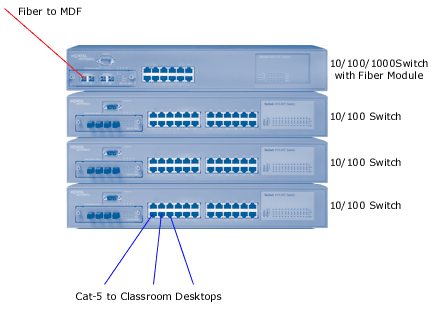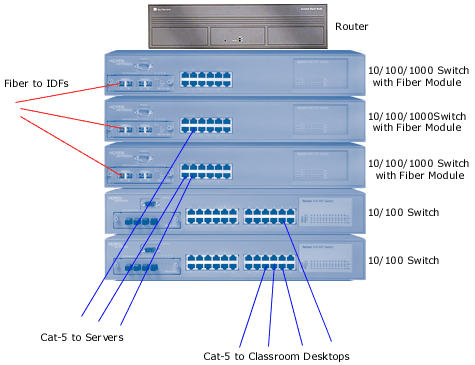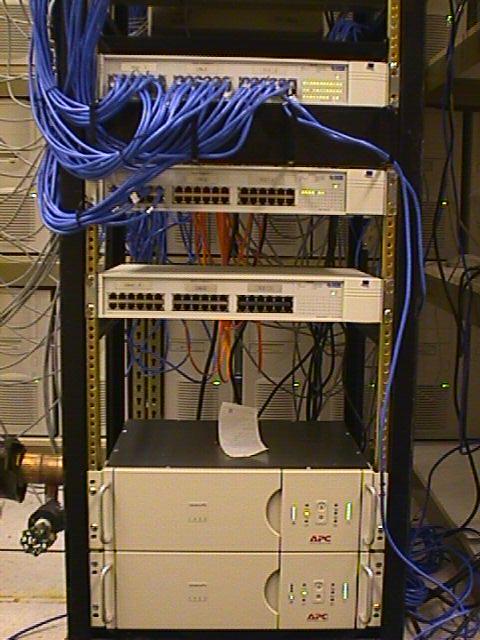Network Management
Possible network topologies:
- Flat (all elements are at the same level-3)
- According to the physical layout of equipment
- According to functional requirements

- An important element is the "intermediate distribution frame (IDF)
- Termination point for all floor's machines
- Label each frame with building, floor, and serial number
- Label each connection with room number and jack identifier
- Example 1/4/2/12A: building 1, floor 4, frame 2, room 12, jack A

In large buildings a main distribution frame (MDF),
often located at the data centre,
acts as a central hub.
Basic principles:
- Simple architecture
- Reliable implementation
- Labeling and documentation
- Use the best wiring you can afford
- UPS at the distribution frames
- Consistently locate IDFs on each floor
- Use clear demarcation points for network providers
- Utilise open protocols (IETF, IEEE)
- Adopt simple routing
- Use specialised routers (not general-purpose computers)
- Minimise number of vendors
- Avoid bleeding-edge technology

Distribution frame. On the bottom one can see the UPS units.
 Last change: Tuesday, December 9, 2003 9:31 pm
Last change: Tuesday, December 9, 2003 9:31 pm


